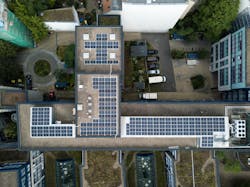NREL report: Using photovoltaic modules with longer lifetimes is a better option than recycling
By Peter Fabris, Contributing Editor
A new report from the U.S. National Renewable Energy Laboratory (NREL) says PV module lifetime extensions should be prioritized over closed-loop recycling to reduce demand for new materials.
Researchers assessed the impact on new material demand with different module lifetimes from 15 to 50 years. They also examined closed-loop recycling, and assumed that the U.S. will have 1.75 terawatts of cumulative PV installed capacity by 2050.
Modules with 50-year lifetimes could reduce new material demand by 3% through lower deployment, compared to a 35-year baseline scenario. Fifteen-year modules would require an additional 1.2 TW of replacement modules, which would increase new material demand and waste unless over 95% of the module mass was closed-loop recycled.
To date, no PV technology has reached near the 95% level of closed-loop recycling for all component materials. Thus, manufacturing longer-lasting PVs is the more eco-friendly choice.
